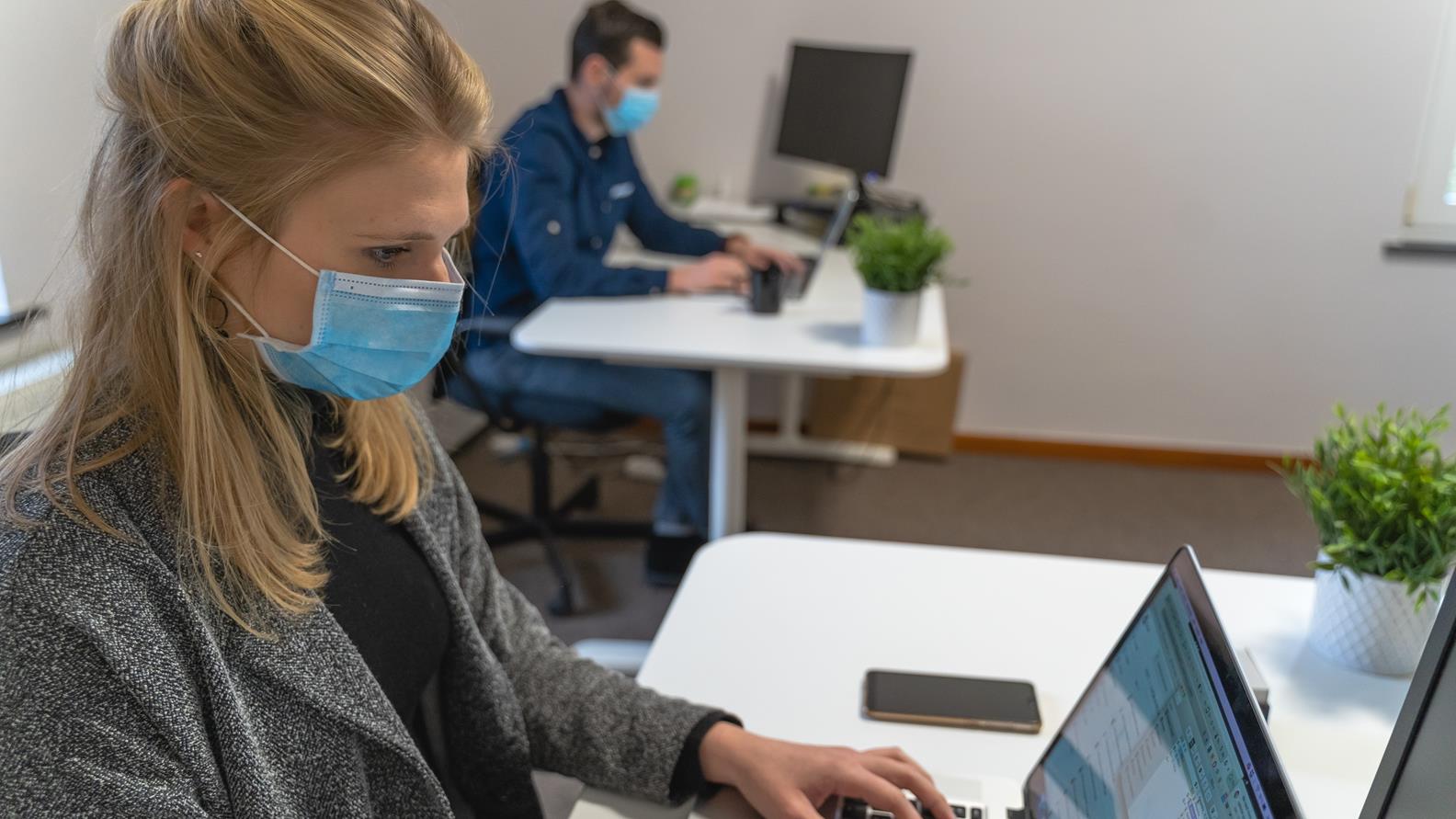Did You Know?
Touchless technology
At the present time, hygiene is more important than ever – especially in sensitive areas like lavatories and bathrooms, in private as well as public spaces. The increased need for hygiene leads to hand-washing routines being questioned. Today, more than ever, having to touch a conventional faucet – especially in a public bathroom – is not an attractive option. Touchless faucets, as an alternative, are not new. But the changed awareness of hygiene puts these products in the spotlight.
But what is touchless technology?
Touchless technology works with sensors and is therefore also called sensor technology. A sensor is an instrument that converts a physical event into an electrical signal. To do that, it needs to combine electronic engineering with mechanical engineering, physics and chemistry. Therefore, understanding sensor technology in itself requires a multidisciplinary background knowledge.
In which areas is touchless technology used?
In addition to applications in process engineering, electronics and computer technology, as well as thermography and medicine, touchless technology is often used in sanitary installations. Well known in this field is the use of sensors on taps and toilet flush plates.
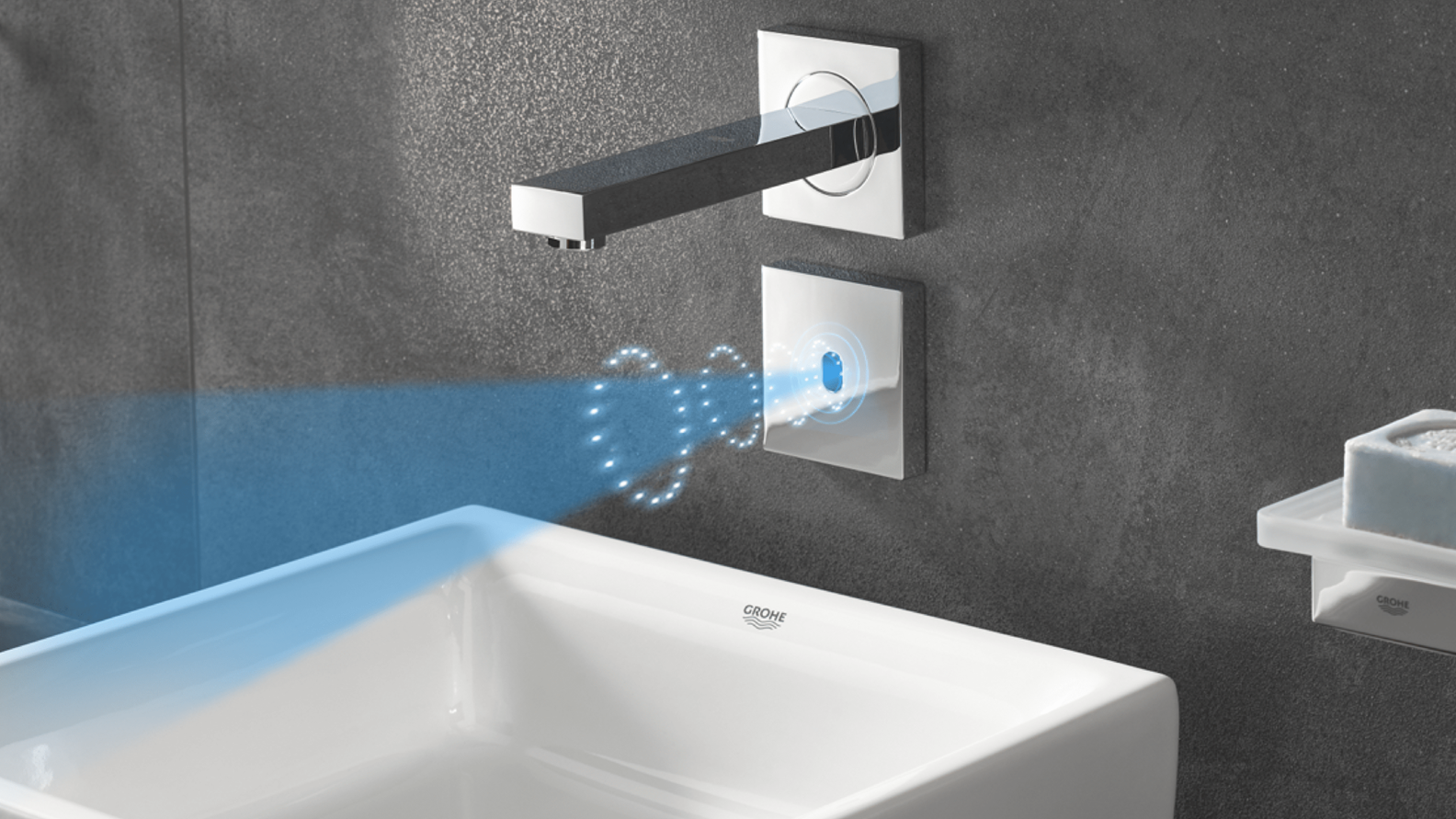
And how does touchless technology work?
There is a wide range of sensors and sensor types, but sensors can basically be explained as follows: Sensors can detect the property quantity of a measured object and convert it into a readable signal, which in turn can be displayed on an instrument
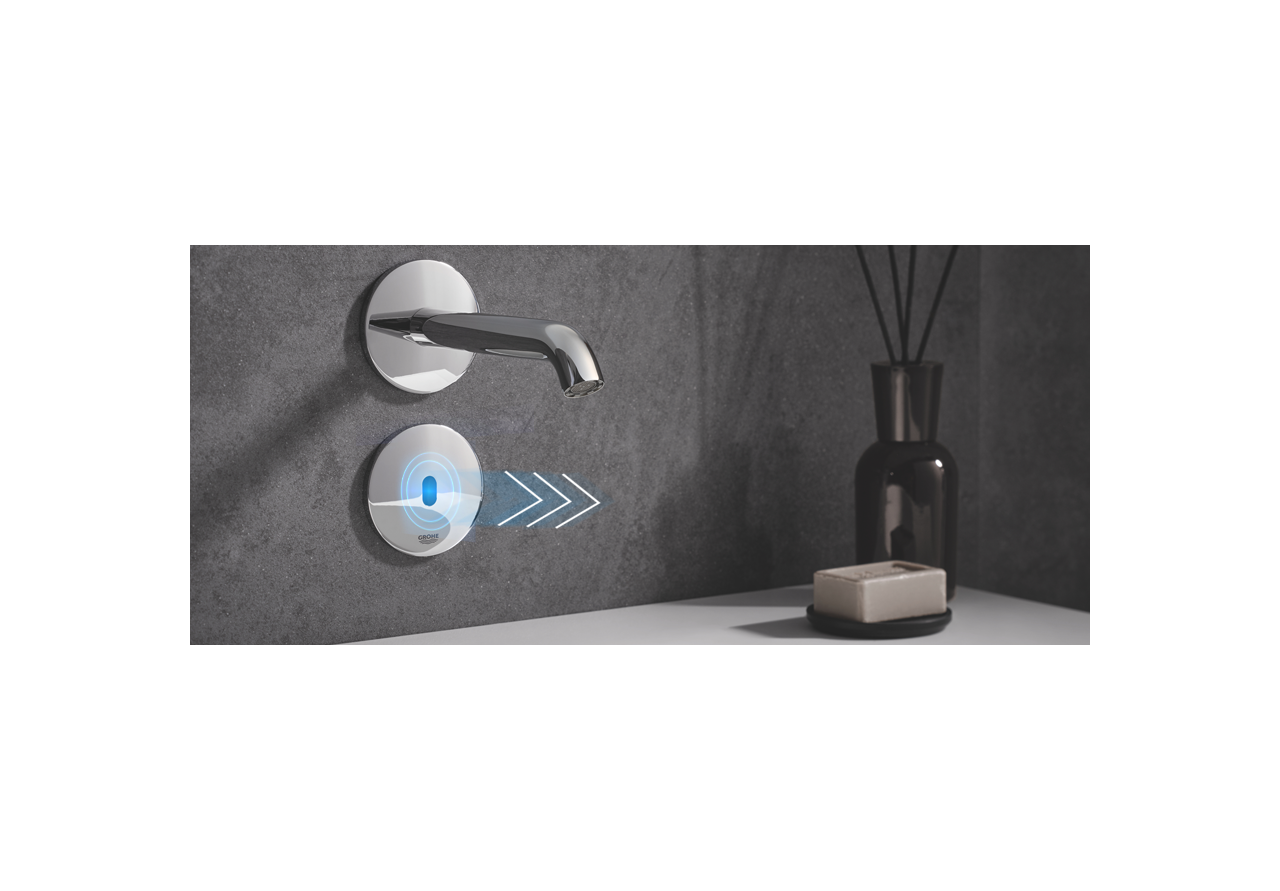
A transmission diode constantly emits light pulses in the infrared range of which can be adjusted.
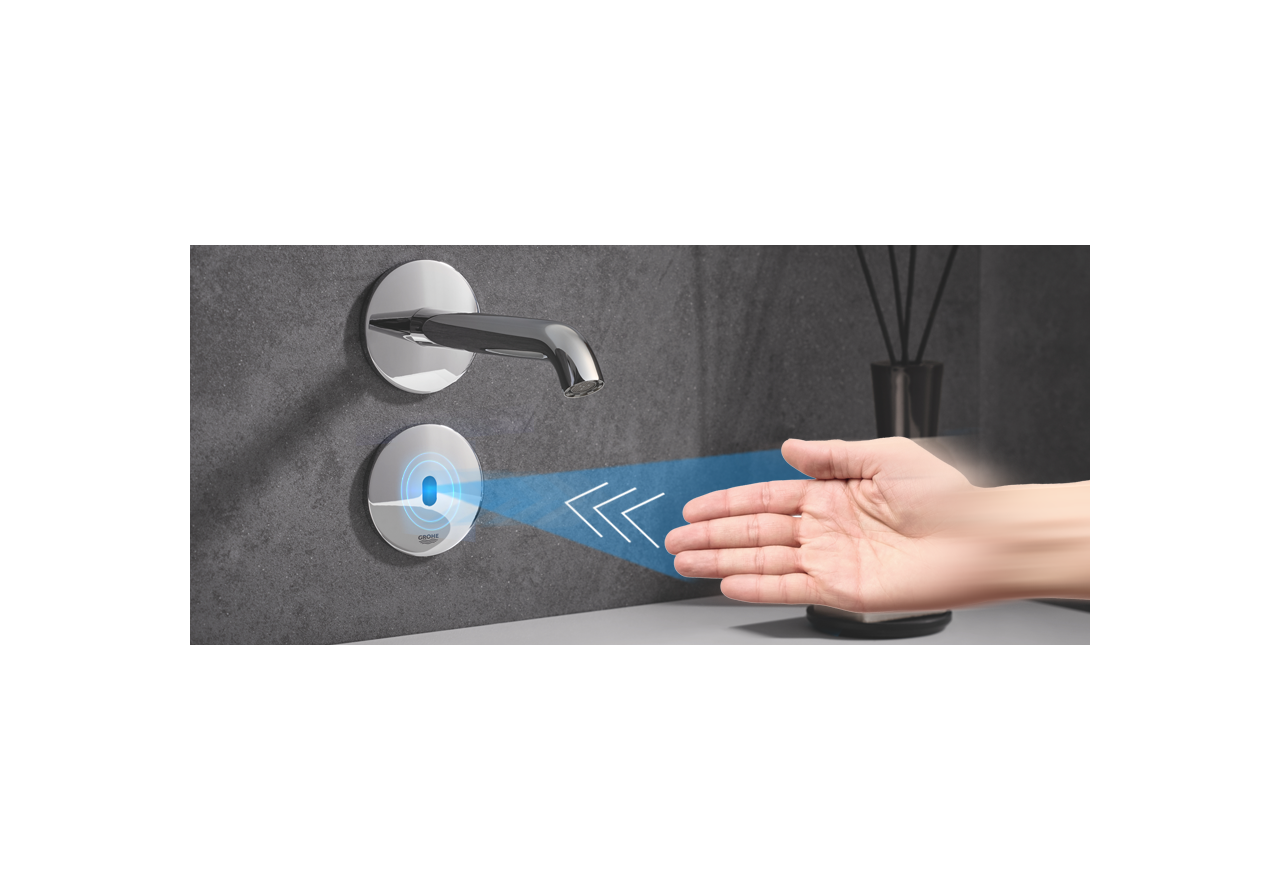
If the user’s hands are under the spout, the light pulses are reflected and converted into an electrical signal.

The signal opens the valve. Depending on the electronic setting, the water starts to flow.
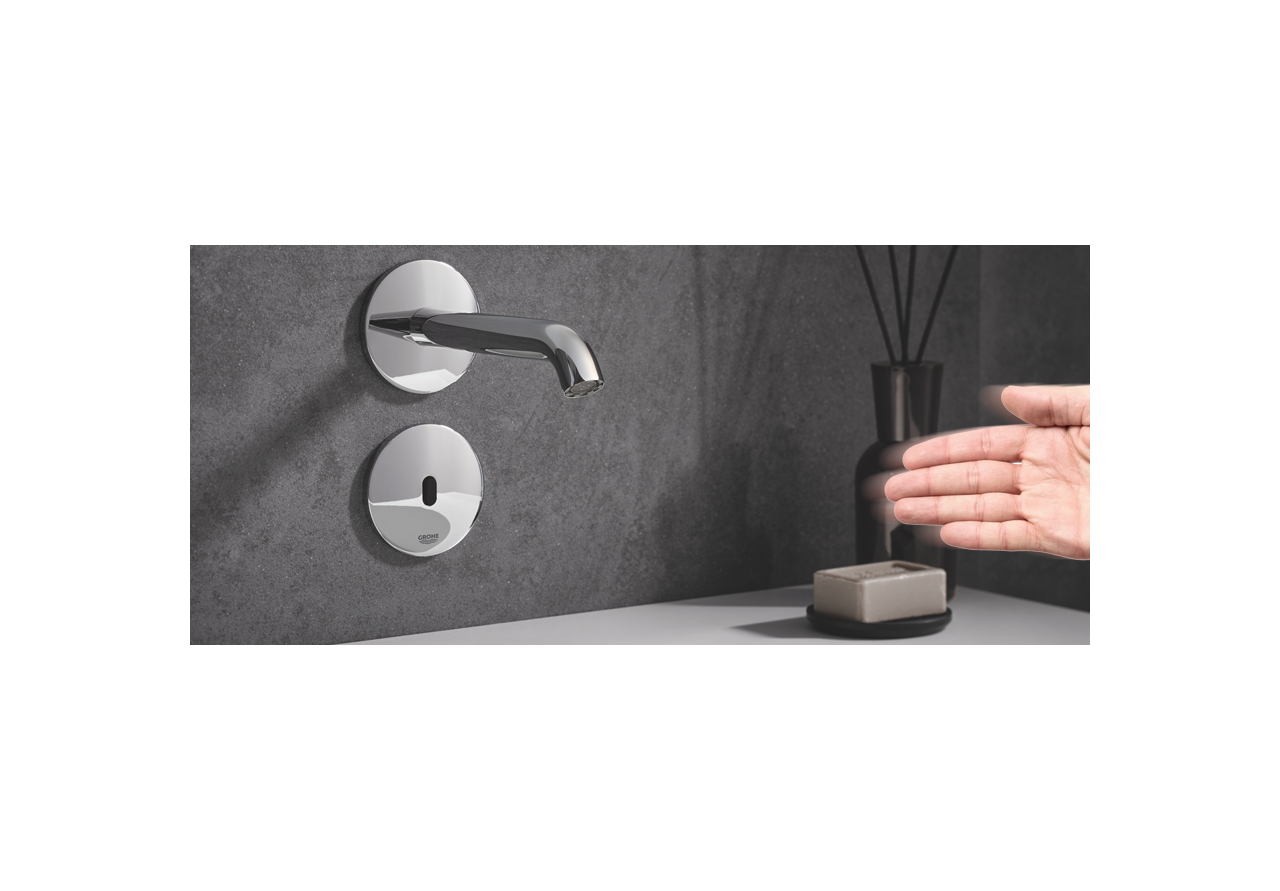
As soon as the hand leaves the sensor range, the diode stops receiving and the solenoid valve closes.
So why touchless taps?
Two of the main arguments in favor of using touchless taps are:
- Touchless technology improves hygiene
To put it simply, touch-free faucets lead to better hygiene. In this way, the contact transmission of germs can be minimized. The additional automatic flushing also reduces the risk of legionella growth while no water is being used. An optimized inner water guide, thermal disinfection against germs and automatic hygiene rinsing improves not only usage, but also drinking water hygiene.
- And prevention of water waste due to the start-stop feature
Because of the automatic start-stop feature, water only flows when someone actually holds their hands under the tap. Accordingly, this feature ensures the prevention of water waste, increased energy efficiency and sustainable ease-of-use through the touchless activation of the water flow by hand movement. This function is possible thanks to reliable and precise sensor technology.
- In which areas are touchless taps necessary?
In some areas, European standards and directives require that, based on hygiene regulations, taps should not be used manually. This is the case, for example, in the medical sector. Touch-free fittings reduce the risk of infection and reduce the transmission of germs. In dairy- and meat-processing companies, they reduce the risk of product contamination and the spread of disease. Touchless taps are also useful in hotel and restaurant settings. They improve hygiene standards in public areas, as well as economic efficiency, as water only flows when it is needed. The same applies to private households.
- And what options are included with touchless taps?
Plug-and-play installation ensures that the faucet is easy to assemble and ready for use in only a few minutes. Either manually or by a remote control, different settings can be easily selected, such as the detection range of the sensor or the cleaning mode that can be set when cleaning the washbasin. Both options serve to avoid unnecessary water consumption. This is also supported by the possible variation of the switch-off delay, which can be adjusted.
Some selected products are even able to communicate with smartphones via Bluetooth. In this way, it is easier to control the consumption data and also to be able to set a variety of functions with your smartphone.
In addition, it is possible to choose between mains- and battery-powered faucets. Here the long life of 7 years, without battery replacement, is clearly a positive point to emphasize.
All in all, the improvement of hygiene is ensured mainly by operation without touching. However, there are also other factors that can contribute to optimal hygiene, such as the regular automatic rinsing cycles of the piping system, of which the duration and frequency can be adjusted.
Thus, it can be stated that touchless technology has a high savings potential in the field of sanitary installations. Especially with regard to hygiene and water savings, touchless fittings are particularly efficient and should be preferred accordingly.




